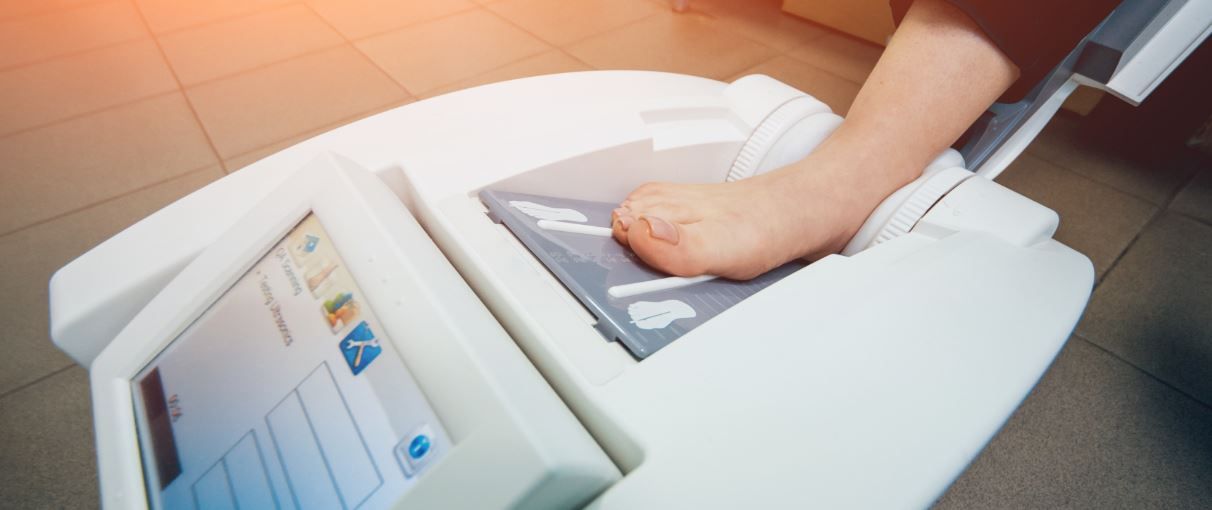Article
Osteoporosis
Repeat BMD Testing Every Three Years May Hold Little Value
Author(s):
Postmenopausal women may not need a repeat bone mineral density test after three years to determine risk of osteoporotic fracture, a study finds.
Portable equipment bone mineral testing (©Romaset,AdobeStock)

Postmenopausal women do not need a repeat bone mineral density test after three years to determine their risk of osteoporotic fracture, a study published in JAMA Internal Medicine has found.
The study found that the results of a second BMD test conducted around three years after the first baseline measurement did not improve on the accuracy of predicting a subsequent hip or major osteoporotic fracture.
“I think many clinicians will be surprised by these results because it seems that frequent repeated assessments of BMD among untreated persons are common,” Carolyn Crandall, professor of medicine at the David Geffen School of Medicine at University of California, Los Angeles told Rheumatology Network.
“The most important message is that repeated BMD testing three years after baseline BMD in postmenopausal women should not be routinely performed,” she said. “This information will inform future guidelines regarding the interval for repeated BMD testing in untreated postmenopausal women.”
The United States Preventive Services Task Force (USPSTF) currently recommends bone mineral density testing to screen for osteoporosis in women aged 65 years and older to screen for osteoporosis, and in younger postmenopausal women with clinical risk factors for osteoporosis[i]. However, the Task Force recommendations do not specify how frequently these assessments should be conducted due to limited evidence, so whether repeated BMD testing improves fracture prediction is unclear. Dr. Crandall and her colleagues therefore set out to test whether a second BMD measurement approximately three years after the initial baseline measurement improved prediction of fractures.
They accessed data from the Women’s Health Initiative study on 7,419 postmenopausal women who received a bone mineral density assessment of the lumbar spine and hip at a mean age of 66.1 years and then another approximately three years later.
The women were followed up for an average of nine years during which time 139 (1.9%) had hip fractures, and 732 (9.9%) had major osteoporotic fractures. Analysis of the two sets of bone mineral density measurements revealed that both baseline BMD and change in BMD over three years were independently associated with incident fracture, but that lower baseline BMD was more strongly associated with increased fracture risk than the three-year change, meaning that the availability of the second set did not improve the ability to predict fracture risk in any meaningful way.
In terms of the ability to predict hip fractures, the area under the receiver operating characteristic curve (AU-ROC) values were 0.71 for baseline total hip bone mineral density, 0.61 for change in total hip BMD between the first and second measurements, and 0.73 for the combination of baseline total hip BMD and change in total hip BMD.
For predicting major osteoporotic fracture, AU-ROC values were 0.61 for baseline total hip BMD, 0.53 for change in total hip BMD, and 0.61 for the combination of the two.
Individually both femoral neck and lumbar spine BMD assessments had similar ability to discriminate between women who experienced hip fractures or major osteoporotic fracture and those who did not.
The researchers concluded that their findings show that routinely repeating measurement of BMD 3 years after baseline does not have high clinical utility, especially in context of the competing demands and time constraints in busy clinical practice.
“Resources should be devoted to increasing the underuse of baseline BMD testing among women aged between 65 and 85 years, one-quarter of whom do not receive an initial BMD test,” said Crandall.
_______________
REFERENCES
Crandall CJ, Larson J, Wright NC, et al. Serial Bone Density Measurement and Incident Fracture Risk Discrimination in Postmenopausal Women. JAMA Intern Med. Published online July 27, 2020. doi:10.1001/jamainternmed.2020.2986
[i]Curry SJ, Krist AH, Owens DK, et al; US Preventive Services Task Force. Screening for osteoporosis to prevent fractures: US Preventive Services Task Force recommendation statement. JAMA. 2018;319(24):2521-2531. doi:10.1001/jama.2018.7498




